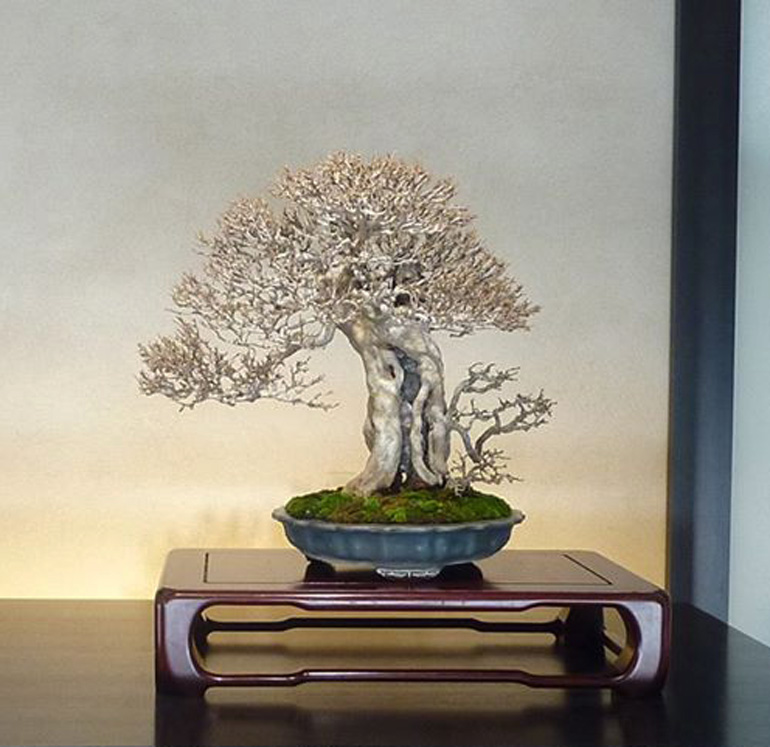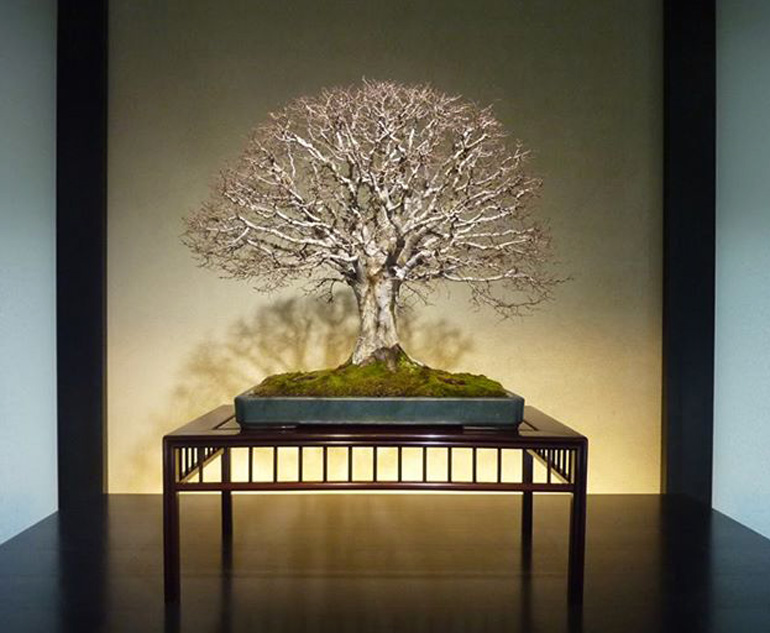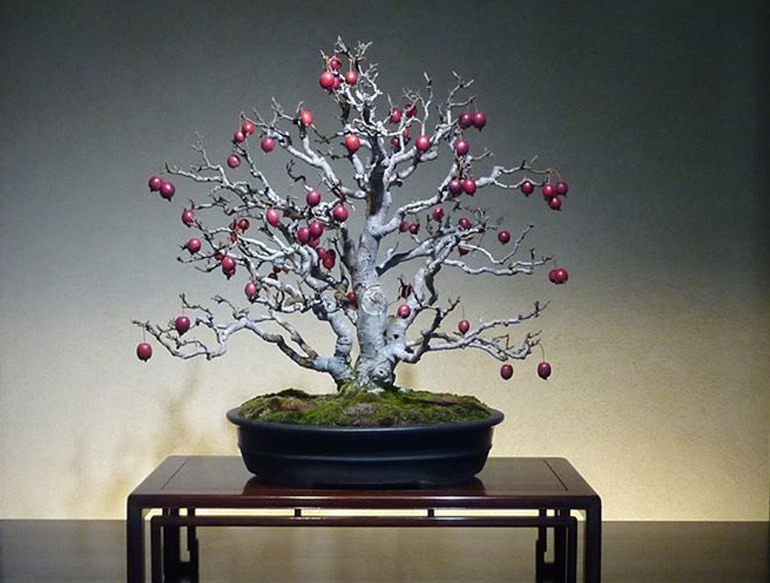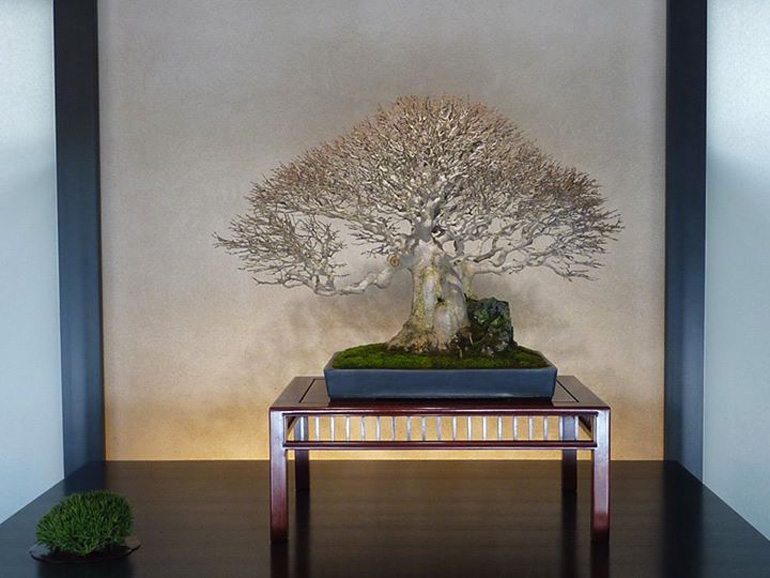
We don’t usually feature photos with so much background noise. But this bonsai (Trident maple) is phenomenal and the photo has an artistic quality and gives you a sense of place (the Omiya Bonsai Art Museum).
The thing that most separates Japanese bonsai from much of the bonsai in the West* is refinement. With deciduous trees this is most obvious when you look at ramification (branch structure and particularly fine branch structure). There are certainly other feature that express refinement, for example taper and nebari, but nothing expresses it more than the development of fine branching.
All the bonsai shown here resides at the Omiya Bonsai Art Museum in Saitama, Japan. They all deciduous trees in winter with their bare bones exposed. A good time to study line and ramification.
* There are of course some bonsai in the West (and elsewhere) that express great refinement, but in general the Japanese are still the masters of the art of refinement. This has to do with technical expertise and simply time in training.

This Trident maple shows good ramification and phenomenal trunk that seems to have swallowed a stone.
 A broom style Japanese Zelkova that shows a powerful old trunk and well-balanced branching with excellent ramification.
A broom style Japanese Zelkova that shows a powerful old trunk and well-balanced branching with excellent ramification.

This Stewartia, with its light airy branching, is designed to show off its long smooth trunk and colorful exfoliating bark.
 In this case it’s more about the fruit than ramification. If the birds don’t get them, Crab apples can hold their fruit well into the winter.
In this case it’s more about the fruit than ramification. If the birds don’t get them, Crab apples can hold their fruit well into the winter.

As long as we’re talking about ramification… Not to take anything away from this old Trident maple’s spectacular trunk.
 The delicate branching provides a sharp contrast to the short powerful trunk and its striking nebari. Though Tridents often feature the most developed nebari, this Japanese maple is no slouch in that regard.
The delicate branching provides a sharp contrast to the short powerful trunk and its striking nebari. Though Tridents often feature the most developed nebari, this Japanese maple is no slouch in that regard.
All the photos in this post were borrowed from the Omiya Bonsai Art Museum’s facebook timeline.